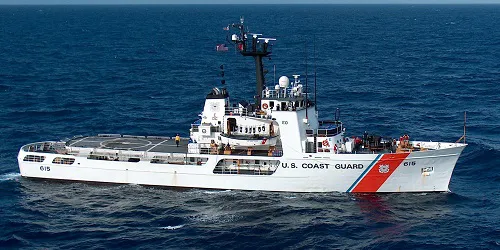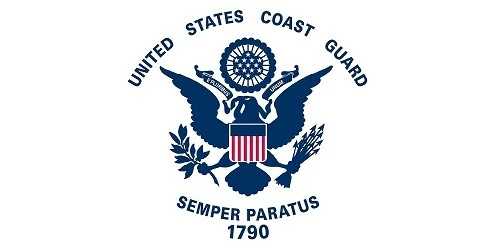-
Cruise Line InformationCarnival Cruise Line Cruising Guide & Tips Alcohol Prices & Selections Unlimited Soda Program Cheers! Beverage Program Deck Plans Dry Dock Schedule Menus Food Recipes Beverage Recipes Secret Decks What's Included? What's Extra?
Norwegian Cruise Line Cruising Guide & Tips Deck Plans What's Included? What's Extra?
Royal Caribbean International Cruising Guide & Tips Food Recipes Beverage Recipes Menus
COVID-19 Cruise Line Bankruptcies -
World's Notable ShipsWorld's Largest Cruise Ships World's Largest Military Ships World's Longest Service Cruise Ships World's Most Recent Cruise Ship Decomms World's Newest Active Cruise Ships World's Oldest Active Cruise Ships World's Oldest Active Military Ships World's Upcoming Cruise Ships COVID-19 Cruise Ship Decommissions
-
Guest RegisterIf you are reading this it means you have not yet registered. Please take a second to REGISTER (it's FREE). You will then be able to enjoy all the features of Cruising Earth.
You should upgrade or use an alternative browser.
CGC Reliance #12 World's Oldest Active Military Ship - Cruising Earth

CGC Reliance - United States Coast Guard
#12 World's Oldest Active Military Ship
CGC Reliance is currently ranked #12 in the list of the World's Oldest Active Military Ships.
12
In Service:
1964
(61 Years of Service)Ship StatisticsTrack CGC Reliance
In Service: January 01, 1964
Gross Tonnage: 1,145 GT
Length: 210.50 Feet
Beam: 34.00 Feet
Speed: 18.0 knots / 20.7 mph
Complement: 75
CGC Reliance Historical Brief
Introduction
The United States Coast Guard Cutter (USCGC) Reliance (WMEC-615) is a distinguished vessel with a rich history of service. As the lead ship of the Reliance-class medium endurance cutters, Reliance has played a pivotal role in a wide range of missions including law enforcement, search and rescue (SAR), environmental protection, and homeland security. This historical brief provides an in-depth overview of the cutter’s construction, operational history, notable missions, and its lasting significance within the Coast Guard fleet.
Construction and Design
The USCGC Reliance was constructed by the Todd Shipyards Corporation in Houston, Texas. The keel was laid down on February 4, 1963, and the vessel was launched on June 11, 1964. The cutter was officially commissioned into service on June 20, 1964, making it the first of the 210-foot medium endurance cutters.
Equipped with advanced navigation, communication, and surveillance systems, Reliance was designed for multi-mission capabilities. Its armament includes a 76mm OTO Melara gun mount, small arms, and advanced sensors for law enforcement and SAR operations. The vessel's design incorporates a robust steel hull, providing durability and seaworthiness essential for extended maritime operations.
Operational History
Early Years and Missions
Upon commissioning, Reliance was initially homeported in Corpus Christi, Texas. During its early years, Reliance’s primary missions included SAR operations, maritime law enforcement, and fisheries protection along the Gulf of Mexico and Atlantic seaboard. The cutter’s advanced capabilities allowed it to effectively monitor and enforce federal laws in these regions’ vast and often challenging maritime environments.
Law Enforcement and Drug Interdiction
Reliance has been a key asset in the Coast Guard’s law enforcement and drug interdiction efforts. Throughout the 1970s and 1980s, the cutter was frequently deployed to intercept drug smuggling vessels in the Caribbean and along the Eastern Seaboard. These missions were crucial in combatting the influx of narcotics into the United States.
One notable drug interdiction success came in the late 1980s when Reliance intercepted a vessel carrying over 12 tons of marijuana. This operation was one of the largest marijuana seizures in Coast Guard history at the time and highlighted the cutter’s significant role in drug interdiction efforts.
Search and Rescue Operations
Search and rescue operations have always been a core mission for Reliance. The cutter has responded to numerous distress calls and has been instrumental in rescuing mariners in peril. One notable SAR mission occurred in 1991 when Reliance rescued the crew of the fishing vessel "North Sea," which had capsized in rough seas off the coast of New England. Despite harsh weather conditions, the cutter’s crew demonstrated exceptional skill and bravery in executing the rescue operation.
Notable Missions and Deployments
Operation Able Sentry
In the early 1990s, Reliance was deployed as part of Operation Able Sentry, a multi-national effort to enforce United Nations sanctions against Haiti. The cutter’s mission included intercepting vessels attempting to smuggle goods and people into and out of Haiti. Reliance’s participation in this operation showcased its versatility and capability to support international peacekeeping efforts.
Counter-Trafficking Efforts
In recent years, Reliance has continued to play a significant role in counter-trafficking operations. The cutter’s advanced technology and skilled crew have been crucial in intercepting drug-laden vessels, including go-fast boats and semi-submersibles. These operations often involve complex, high-risk maneuvers, showcasing the cutter’s agility and the crew’s expertise.
Environmental Protection
Reliance has also been a key player in environmental protection efforts. The cutter has conducted numerous missions to enforce fisheries regulations, prevent illegal fishing activities, and protect marine resources. Additionally, Reliance has been involved in pollution response operations, mitigating the impact of oil spills and other hazardous incidents on the marine environment.
Modernization and Upgrades
To maintain its operational effectiveness, Reliance has undergone several modernization and upgrade programs. These efforts have included enhancements to its communication systems, navigation equipment, and propulsion systems. The upgrades ensure that Reliance remains capable of performing its diverse missions and extends the cutter’s service life.
In recent years, the cutter has received state-of-the-art surveillance and detection equipment, bolstering its capabilities in drug interdiction and maritime security operations. The modernization efforts reflect the Coast Guard’s commitment to maintaining a fleet capable of addressing contemporary maritime challenges.
Strategic Importance
Homeland Security
In the aftermath of the September 11, 2001, terrorist attacks, Reliance’s mission expanded to include homeland security operations. The cutter has been deployed to patrol and secure critical maritime infrastructure, such as ports and waterways, against potential terrorist threats. These missions are crucial in ensuring the safety and security of the United States’ maritime borders.
Humanitarian Assistance and Disaster Relief
Reliance has also been deployed for humanitarian assistance and disaster relief missions. Following natural disasters, such as hurricanes and earthquakes, the cutter has provided vital aid, including medical supplies, food, and logistical support to affected communities. These missions underscore the Coast Guard’s broader commitment to humanitarian efforts and the cutter’s ability to adapt to diverse operational requirements.
Legacy and Impact
The USCGC Reliance has earned a distinguished reputation within the Coast Guard fleet. Its contributions to law enforcement, SAR missions, environmental protection, and homeland security have had a lasting impact on national and maritime security. The cutter’s storied history is a testament to the dedication and professionalism of its crew.
Reliance’s enduring legacy is reflected in its numerous awards and commendations, including the Coast Guard Unit Commendation and the Meritorious Unit Commendation. These honors recognize the cutter’s exceptional performance and the significant role it has played in fulfilling the Coast Guard’s mission.
Future Prospects
As one of the oldest cutters still in service, Reliance continues to serve with distinction. The Coast Guard has plans to eventually replace the Reliance-class cutters with the new Offshore Patrol Cutters (OPCs), which will bring enhanced capabilities and modern technology to the fleet. However, until its decommissioning, Reliance will remain a critical asset, continuing to perform its multi-mission role effectively.
Conclusion
The USCGC Reliance (WMEC-615) stands as a testament to the Coast Guard’s commitment to maritime safety, security, and environmental stewardship. Since its commissioning in 1964, Reliance has demonstrated exceptional versatility and capability across a wide range of missions. From drug interdiction and law enforcement to search and rescue and environmental protection, the cutter has been a vital asset in protecting America’s maritime interests.
As Reliance continues to serve, it remains a symbol of the Coast Guard’s dedication to safeguarding lives, enforcing laws, and preserving the marine environment. The cutter’s storied history and enduring contributions underscore its significance within the Coast Guard fleet and its role in promoting maritime security and safety.
Cruising Earth Website Updates
The cruising industry is ever changing. The information contained on this site is updated frequently and kept as accurate as possible. If you believe any of the information is outdated, inaccurate, or you believe you have additional information that could be useful to other cruisers, please post the updated/new information in our Community Forums. Please use this same link to post any questions you may have.

